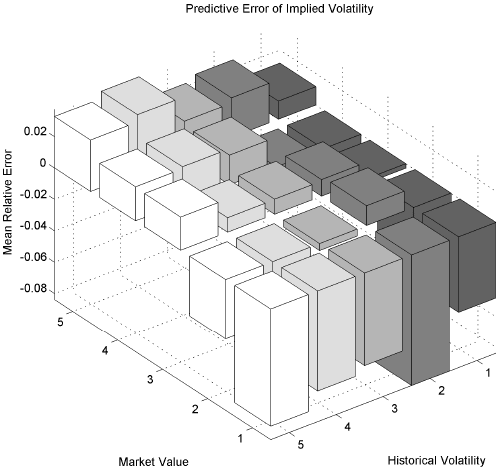Does the volatility risk premium, the difference between options-implied volatility and future realized (actual) volatility, vary systematically with the four most widely used equity risk factors (market, size, book-to-market and momentum)? In other words, might the four factors point to pockets of underpriced or overpriced options? In their November 2008 paper entitled “Implied and Realized Volatility in the Cross-Section of Equity Options”, Manuel Ammann, David Skovmand and Michael Verhofen investigate the factor dependence of the volatility premium for U.S. equities. Using a sample of all U.S. equity at-the-money call options 91 days from expiration over the period January 1996 through April 2006, along with associated stock price and firm fundamentals data, they conclude that:
- High beta stocks, small stocks, stocks with a high book-to-market ratio and non-momentum stocks trade at higher implied volatilities than justified by their historical volatilities.
- Consequentially, implied volatility tends to overestimate future realized volatility for low-beta stocks, small stocks, high book-to-market stocks and stocks with no momentum. Conversely, implied volatility tends to underestimate realized volatility for stocks with the opposite characteristics. (See the chart below for an example.)
- Results may be driven by a relatively few extreme cases.
The following chart, one of many similar in the paper, shows how the mean prediction error of current implied volatility relative to future realized volatility varies with “Market Value” (market capitalization, or the size factor) and “Historical Volatility” (immediate past realized volatility). Market Value and Historical Volatility range from the fifth of the sample with the lowest values (1) to the fifth of the sample with the highest values (5). Positive (negative) errors mean that implied volatility on average underestimates (overestimates) future realized volatility. The chart shows that equity options tend to be relatively cheap for large firms (implied volatility underestimates future realized volatility) and relatively expensive (implied volatility overestimates future realized volatility) for small firms.

In summary, options buyers (sellers) might want to tilt toward stocks with high (low) betas, large (small) market capitalizations, low (high) book-to-market ratios and significant (no) momentum.